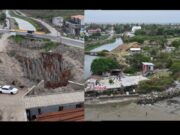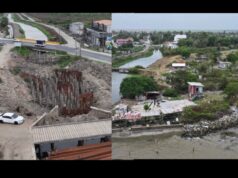Before the end of the second quarter, the Guyana Revenue Authority (GRA) will be opening a Policy, Programs and Planning Division (PPPD). This is according to the entity’s Commissioner General, Godfrey Statia.
Statia said that the new division is one of the projects emanating from the authority’s Strategic Plan for 2019 to 2021.
A document that was seen by the Guyana Standard states that the PPPD will review, analyze and report on the organization’s performance against national plans and targets, and identify areas of excellence and those that must be improved in future annual plans. The Strategic Plan states that performance will be tracked by outcomes and indicators as agreed and defined.
The document notes, “This will be done electronically where possible and manually otherwise until suitable technology solutions are in place. International Survey on Revenue Administration (ISORA) and Tax Administration Diagnostic Assessment Tool (TADAT) will provide valuable insights into useful indicators to be tracked.”
“This new approach will also facilitate better consolidation of operations and allow for the critical linkage between Cost and Revenue Centers to ascertain efficiency levels (productivity). In the absence of this linkage, the organization is merely spending on a ‘day-to-day’ basis to facilitate tactical and operational activities without regard for the long-term consequences which emphasizes a lack of ‘strategic spending’ and a disconnect between capital expenditure and the strategic objectives.”
The Guyana Standard understands that the PPPD will deploy contemporary scientific analytical approaches to investigate and proffer recommendations towards the improvement of strategic policies that will realize synergies and optimize revenue administration and collection.
Additionally, the Planning, Monitoring and Analysis Unit of the PPPD will be responsible for Risk Analysis Programs. According to GRA, this Unit will develop and implement risk identification, analysis, and evaluation processes. In collaboration with all functional units in policy and programs sections, it will also develop risk response interventions covering areas of high risk.
Risk profiling will also be expanded to assessments of economic sectors.











